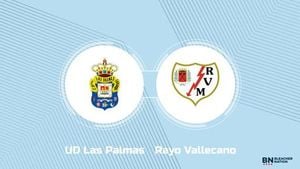On May 7, 2025, the Brazilian Central Bank (Banco Central do Brasil) made a significant decision to raise the basic interest rate, known as the Selic, by 0.5 percentage points, bringing it to 14.75% per year. This marks the highest level for the Selic since August 2006, during the first term of President Luiz Inácio Lula da Silva. The unanimous decision by the Monetary Policy Committee (Copom) was widely anticipated by the market and reflects ongoing concerns about inflation and economic stability.
The increase in the Selic rate is expected to have a substantial impact on fixed income investments, which are likely to see higher returns as a result. According to financial analysts, options linked to the Selic rate, such as Tesouro Selic, will yield greater profits for investors. Meanwhile, traditional savings accounts, which currently offer a return of 0.5% per month plus the Reference Rate (TR), are still losing ground compared to other investment options.
With the Selic rate now at 14.75%, the expected annual return for a R$ 1,000 investment is as follows: the savings account will yield R$ 73.40 (7.34% per year), while the Tesouro Selic will provide R$ 117.20 (11.72% per year). Certificates of deposit (CDBs) from medium-sized banks may offer returns ranging from R$ 87.90 to R$ 134.80, translating to annual rates between 8.79% and 13.48%. These calculations account for income tax deductions, with savings accounts exempt from taxation.
Moreover, it is crucial for investors to remain vigilant regarding inflation, which is projected to be 5.53% for 2025, according to the Central Bank's Focus Bulletin. When factoring in inflation and income tax, the real returns for R$ 1,000 over the year are expected to be R$ 17.20 (1.72% per year) for savings accounts, R$ 58.70 (5.87% per year) for Tesouro Selic, and between R$ 30.90 and R$ 75.30 (3.09% to 7.53% per year) for CDBs.
In a statement following the Copom meeting, the Central Bank acknowledged that while they did not explicitly commit to further rate increases, they left the door open for potential hikes if necessary. The committee emphasized the importance of flexibility in monetary policy, particularly in light of the current economic uncertainties.
Gustavo Cruz, chief strategist at RB Investimentos, noted that the tone of the Copom's statement mirrored that of the U.S. Federal Reserve's recent decisions, highlighting a shared concern over inflation risks. "The statement reflects a scenario of greater instability, with heightened risks for both inflation and economic activity," Cruz stated.
Alexandre Maluf, an economist at XP, pointed out a shift in the balance of risks for inflation in the Copom's communication. He remarked, "The committee now recognizes both upward and downward risks, indicating a more nuanced approach to managing inflation expectations. This could be interpreted as a more dovish stance, suggesting a potential end to the current cycle of interest rate hikes."
In contrast, Natalie Victal, chief economist at SulAmérica Investimentos, described the Copom's statement as slightly dovish, suggesting that the cycle of interest rate increases may be nearing its conclusion. Victal indicated that while there is still room for a possible increase of 25 basis points in the next meeting, the prevailing sentiment leans towards maintaining the current rate.
Daniela Lima, an economist for Brazil at Kinea, echoed this sentiment, stating that the Copom had left the "door open" for a future rate hike but acknowledged that the likelihood of maintaining the current rate is more probable. Lima emphasized that the committee's focus remains on ensuring inflation converges to its target.
As the Copom continues to navigate the complexities of monetary policy, the external economic environment remains a significant factor. The committee highlighted the adverse and uncertain conditions stemming from U.S. economic policy, which has implications for global financial markets. Marcelo Bolzan, a partner at The Hill Capital, pointed out that the emphasis on U.S. trade policy in the Copom's statement reflects the ongoing uncertainties that could impact Brazil's economic outlook.
Nicolas Borsoi, chief economist at Nova Futura Investimentos, noted that the Copom appears to favor a strategy of maintaining high interest rates for an extended period. He stated, "The committee's emphasis on a significantly contractionary monetary policy suggests a cautious approach, aiming to manage inflation expectations effectively." This strategy may also serve to mitigate market perceptions that the Copom would rapidly shift to cutting rates.
Claudio Pires, a partner-director at MAG Investimentos, described the Copom's decision as neutral, recognizing the removal of the previously stated upward bias in inflation risks. He noted that while the committee remains vigilant, the overall tone suggests a careful assessment of future monetary policy adjustments.
As Brazil grapples with these economic challenges, the Copom's decisions will continue to play a crucial role in shaping the financial landscape. Investors are advised to remain informed and adaptable to the evolving economic conditions as they consider their investment strategies in light of the new Selic rate.





